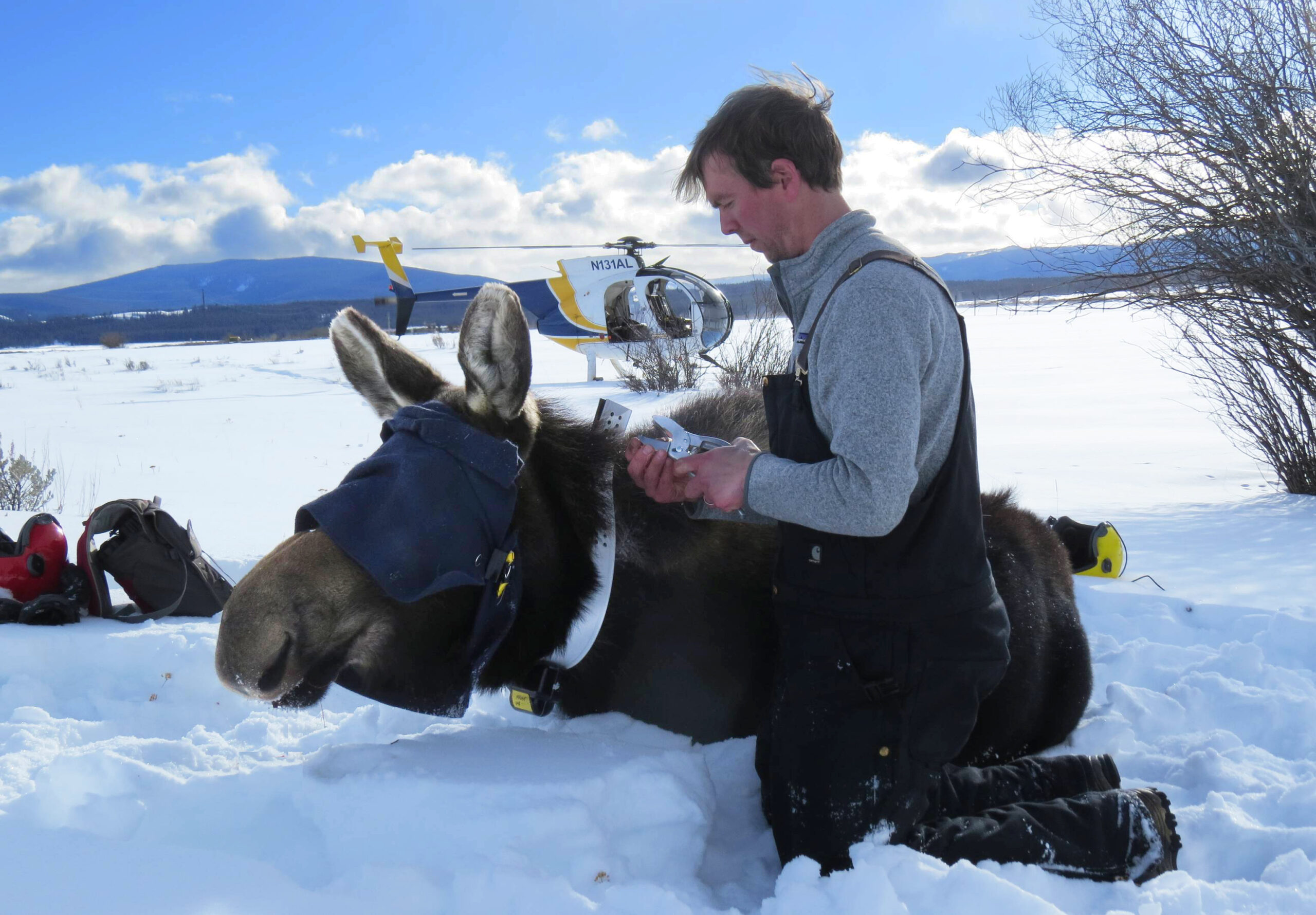There was a lot of concern 11 years ago when Montana Fish, Wildlife & Parks started a 10-year study of moose in three regions of the state. More of the largest members of the deer family were showing up dead and infected with arterial worms. There were reports of moose having scratched off much of their fur due to infestations by ticks. Moose populations seemed down and hunting tags were restricted in most areas to bulls only to protect reproductive cows. Now that the FWP study has concluded, biologist Nick DeCesare can point with confidence to data in a lengthy final report showing what’s going on in the three diverse regions – the Cabinet-Salish Mountains in northwestern Montana; the Rocky Mountain Front; and the Big Hole Valley in southwestern Montana. Here’s the big takeaway, moose numbers in the three regions are stable to increasing. The biggest killer in the three regions remains parasites like the arterial worms, especially in the Big Hole Valley. Important to all of the areas is the quality of the animals’ food, which seems to be best along the Rocky Mountain Front. There is a ton of other information in the study, including the affect of predators (fairly low for the most part) and concerns about the potential for less snow in the spring.
To learn more, check out my story at https://billingsgazette.com/outdoors/fish-wildlife–parks-moose-rocky-mountain-front-cabinet-salish-big-hole-valley-nick-decesare/article_383929f4-9ae4-11ef-a52a-3b5cf1886365.html.

Brett French reports: 10-year Montana moose study wraps up

LIVE Saturday Mornings
from 6:06am to 8:00am
Montana Outdoor Podcast
Exclusive Sneak Peek: When the Guides Talk Ice, We Listen
New lakes and fresh ice intel — check ou this exclusive sneak peek!
Want More Fish This Season? Start With Watching This MT Podcast Episode on YouTube..
STOP Scrolling — The Montana Outdoor Podcast Just Dropped GOLD…PURE ICE FISHING GOLD! Watch it now on YouTube!
Unlocking the Ice — A MT Outdoor Podcast Sneak Peek With Don Wilkins
How does Don Wilkins catch king salmon through the ice? Find out here…
Northwest Montana Ice Fishing Preview [MONTANA OUTDOOR PODCAST]
Downrigger reviews several lakes, explaining which are best for certain species (e.g. trout, perch, other common ice-fishing catches in Montana) […]
Guess Who’s Talking on the Montana Outdoor Podcast…
The next episode drops a bombshell from a Montana fishing icon — and trust us, you’ll want to hear it…
MT Outdoor Podcast: Meet the Wizards Behind Montana’s Unspawnable Salmon
They can’t spawn….they only live for three years. So, how are there new kings every season?
Montana Tourney Trail
Montana Fishing Reports
Outdoor How-To
How Make a Simple Survival Signal Torch
The easiest signal torch made in minutes…
DIY Smoker: Filing Cabinet Turned Pitmaster
Don’t throw that old filing cabinet away…give it a new gig!
DIY: McFishing Rod…That Works
Proof you don’t need fancy gear to make the perfect catch…
MT Wildlife
Front Row Seats (from the car) to a Live Hunt
It’s pretty cool to see some elk, but it’s even cooler to see a predator stalking them live…
Grizzly Bear Delisting May Be Closer Than We Think
Could Wyoming’s grizzlies be hunted again? Nesvik weighs in…
A Massive Elk Invasion
This is an elk takeover that would be crazy to witness in-person!
Viral Stories
Montana (Helena) Team Wins $500,000 in Cabo Fishing Tournament
A group of Montana anglers just proved that Big Sky Country breeds world-class fishermen — even in saltwater. Team Grey […]
Very Rare Footage of Wolverine Hunting Deer in Montana
Rare footage captures a wolverine hunting near Montana’s Ajax Mountain…
Bear’s Journey from Montana to the Savanna
From Montana’s peaks to Africa’s plains, this pup’s next job is guarding the herd to spare the fastest cat alive…
A Bison’s Final Steps at YNP’s Grand Prismatic Spring
Onlookers horrified at a bison took one wrong step into Yellowstone’s Grand Prismatic Spring…
Cow moose, 2 calves dead after encounter with angler
On the morning of June 14, 2025, Wyoming Game and Fish Department personnel received a report that a cow moose had been shot in a confrontation with an angler on the North Tongue River in the Bighorn National Forest near Bear Lodge Resort. When game wardens responded, they found the moose deceased from her injuries.
Montana FWP
LMU 121 pending closure to male lions
Attention big cat holiday hunters…
Recycle Christmas trees at Spotted Eagle to improve fish habitat
It’s that time of year again! Give your Christmas tree a second life underwater…
Wild Game Recipes
Venison Hot Dogs for Christmas Eve!
Who knew deer could taste this good on a bun?
Transform Your Venison Backstraps Into a Show-Stopping Meal
Grill it, spice it, devour it!

